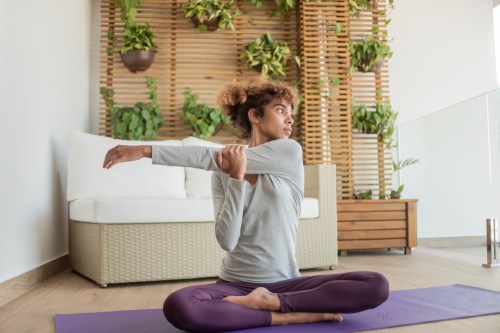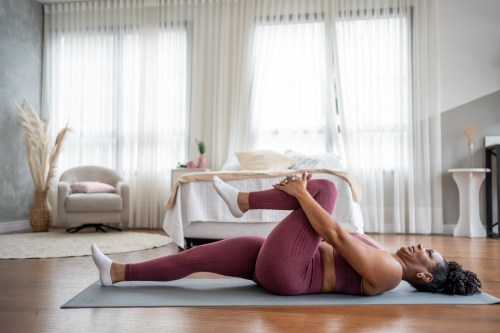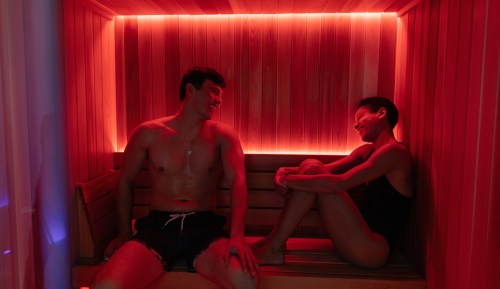This Is What Happens to Your Body If You Never Stretch
A physical therapist explains exactly what happens if you don't stretch. And why getting limber enough to touch your toes is definitely worth your time.

There are two types of people in this world: Those who never stretch and those who brag about their flexibility with not-so-subtle jabs. (“I remember when I couldn’t touch my toes!”) If you’re on Team No Stretch, you’re probably sick of hearing from the know-it-alls doing splits in the corner. That’s why I’m sorry to report that I asked a physical therapist what happens if you don’t stretch—and it’s not good news, fam.
Experts in This Article
physical therapist, sports physiotherapist, pilates instructor, and founder of Form PT.
physical therapist, yoga instructor, and founder of LYT Method
To understand why stretching should be part of everyone’s routine, physical therapist and yoga teacher Lara Heimann, PT, says you first need to understand what all the toe-touching and extension actually does for your body. Many folks believe that stretching elongates your muscles, but that, my friends, is a myth. Instead, it mobilizes and lengthens the connective tissues surrounding your muscles, allowing both them and your joints to move more freely.
“The fascial covering is the connective tissue that is a ubiquitous webbing that’s around everything in the body, including your muscles,” says Heimann. “Each muscle group has individual muscle cells and there’s fascia that covers them, then all these muscles together are covered with even more fascia.” Without movement (and stretching specifically) that fascia molds to your muscles like an immovable cast that keeps your muscles from functioning to their full capacity. Stretching and yoga make that fascia more pliable, free-moving, and elastic. “We have to heat up the connective tissue through movement and through some prolonged stretching to influence into changing,” she says. Makes sense, right?
“We have to heat up the connective tissue through movement and through some prolonged stretching to influence it into changing.” —Lara Heimann, PT
It follows that when you don’t move—and, specifically, when you do the same types of movement over and over again without counterbalancing them via stretching—you wind up feeling tight. Think of it like this: If you broke your arm and wound up in a cast, you’d want to get that cast off stat, right? Stretching is the “it” factor that allows you to transition from a limited range of movement (try making a sandwich with a casted forearm) to an uninterrupted one (one where that PB&J is no problem). If you skip stretching, your body will feel fine in its cast. Until it doesn’t.
“There will eventually be consequences because your joints are not being moved in their whole range of motion, so you might end up pulling the fascia and hurting your joints,” says Heimann. Tightness anywhere in the body can cause a ripple effect that leads to injuries that aren’t even close to that immovable fascia. For example, runners or cyclers with tight hip flexors may experience knee injuries. Meanwhile, runners and cyclists who know they’re predisposed to having tight hips (and stretch them) will more easily stave off these injuries.
That’s why all those hamstring, quad, and chest stretches are so important, but Heimann points out that it takes more than just that to have healthy fascia. It’s really about moving your body in the most diverse way you can so that your fascia has a range of experiences that teach it how to support your every movement. Stretching isn’t about doing the splits; it’s about priming your body to move in ways you love.
Oh hi! You look like someone who loves free workouts, discounts for cult-fave wellness brands, and exclusive Well+Good content. Sign up for Well+, our online community of wellness insiders, and unlock your rewards instantly.
Sign Up for Our Daily Newsletter
Get all the latest in wellness, trends, food, fitness, beauty, and more delivered right to your inbox.
Got it, you've been added to our email list.










